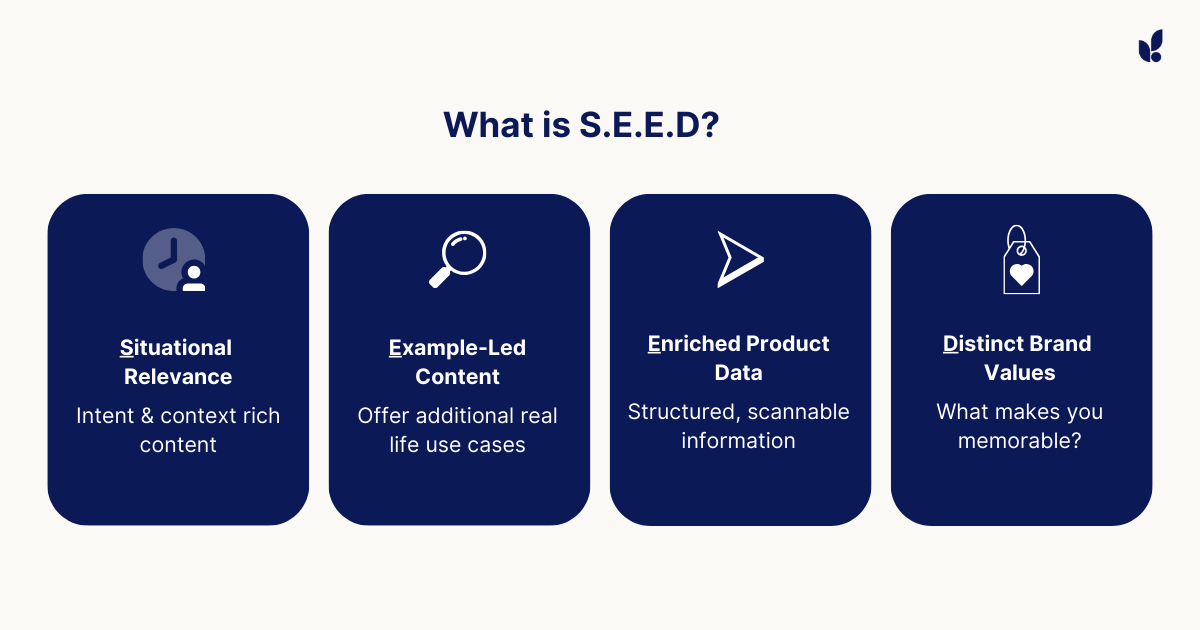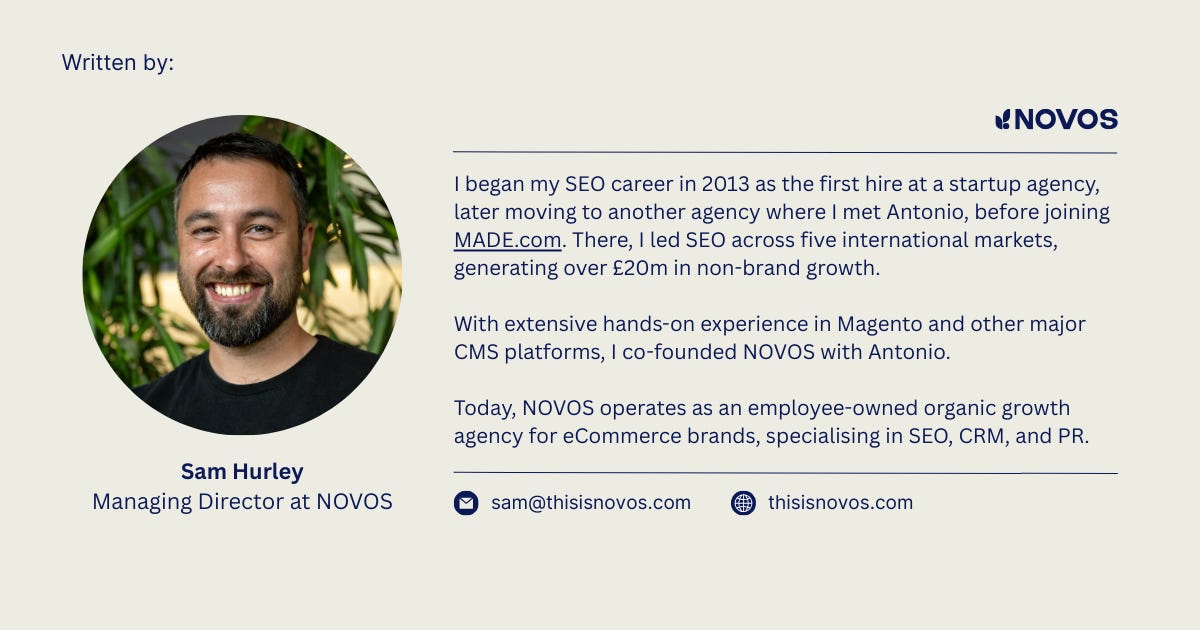Will AI Content Hurt Your eCommerce SEO?
This is what you need to know about AI content and it's impact on SEO
I’ve been meaning to write this post for a while, but several AI copywriting tools have recently gained attention from our clients. Ocula, in particular, came up three times in one week.
If you’re reading this, you likely have the same questions- and you’re probably in the same WhatsApp or Slack groups where these conversations are taking place.
So here’s an SEO’s perspective on whether you should use AI content for your eCommerce site:
Does Google Penalise AI Content?
No, Google does not penalise AI content.
But here’s what you need to know:
AI content typically sees lower engagement.
Google uses engagement signals to decide rankings.
Result: generic AI content spikes, then drops if engagement is poor or if intent doesn’t align with the user’s search.
⚡ Takeaway: Google isn’t your problem. Humans are.
Why “Effort” Wins
Google’s approach has been consistent for over 5 years now:
Penalising businesses was really bad PR for Google
Today, they don’t penalise low-quality content.
They just don’t reward it.
👉 Low effort = low impact.
👉 High effort = sustained growth.
Takeaway: Previously, you’d get penalised. Today, you are just wasting your time and resources.
Our next post focuses on the first E in our SEED framework, which will give practical examples and tactics to cut through the rise of generic AI content.
To answer the question “Can I use AI content for my eCommerce store?” I typically break this down by page template: PLPs, PDPs, and blog/long-form content - since the answer differs for each.
Can I use AI content for PDPs?
✅ Good use case. PDP copy is typically templated anyway.
Layer with reviews + videos.
Add brand-specific experience-led snippets.
⚠️ Over time, as all retailers use AI, human optimisation will again become the differentiator.
Most PDP pages use templated copy anyway, so AI-generated templates are often a significant improvement.
We recommend overlaying this with the experience-led content outlined in our next post.
From an SEO perspective, we always optimise on-page elements for best-selling or high-opportunity PDPs. An AI-generated template gives us a stronger foundation to build on than a mass-generated human template.
Tools to explore:
Ocula.tech
Emfas
Commerce Clarity
Can I use AI content for PLPs?
⚠️ Proceed with caution.
Indexing PLPs at scale isn’t new - AI just speeds it up.
Done poorly, it hurts performance.
AI is useful for snippets at the top of PLPs if they’re missing content.
👉 Always use an experienced SEO with PLP facet indexation.
Filter indexing on mass with AI:
AI has revived the practice of indexing listing pages at scale. This approach existed long before AI, and the advice remains the same: only pursue it with experienced SEO support. It has the potential to do more harm than good.
We recently started working with a Salesforce client who already had filter indexing in place. The pages perform adequately, but there’s a significant missed opportunity. They could have been much more effective—or they could have addressed PDP issues before implementing this activity.
I’ve written more about this topic in the past, where I share a truly awful example of mass creation and how it destroyed the performance of the business » here.
Tools to explore:
None, if you are doing filter indexing work with your developers vs an off-the-shelf option. It needs to be built with an SEO leading the discussions, which involve back and forth with an experienced developer.
Filter page content snippets with AI:
In terms of the snippets at the top of these PLP pages, if they are templated or missing content, then AI can be a good way to get something on the page. Again, human-written snippets are better, but obviously not viable for all the PLP across a large eCommerce site.
Can I use AI content for Blogs/long form?
🚫 Avoid.
If you do use AI:
Feed it with expert insights.
Review carefully before publishing.
Make sure your experience and voice are clear.
For clients, we act as gatekeepers - shaping inputs and reviewing outputs to make sure content cuts through the noise.
This comes back to the points I mentioned previously. If you are using AI for blog content, ensure you are feeding it with your personal experience and expertise to cut through the generic AI content. For clients, if they are using AI, we tell them we want to be the gatekeepers - essentially supporting or defining the inputs and then reviewing the final content before it goes live on the site.
You now have an SEO’s endorsement to use AI for your eCommerce content. The brands that will thrive are those that weave their unique voice and team’s experience throughout their content.
This is why Google evolved E-A-T to E-E-A-T - it’s the experience that AI content can’t replicate.
A final note: treat AI writing tools for what they are - efficiency tools. They’re only as good as the inputs.
As the saying goes: garbage in, garbage out.





